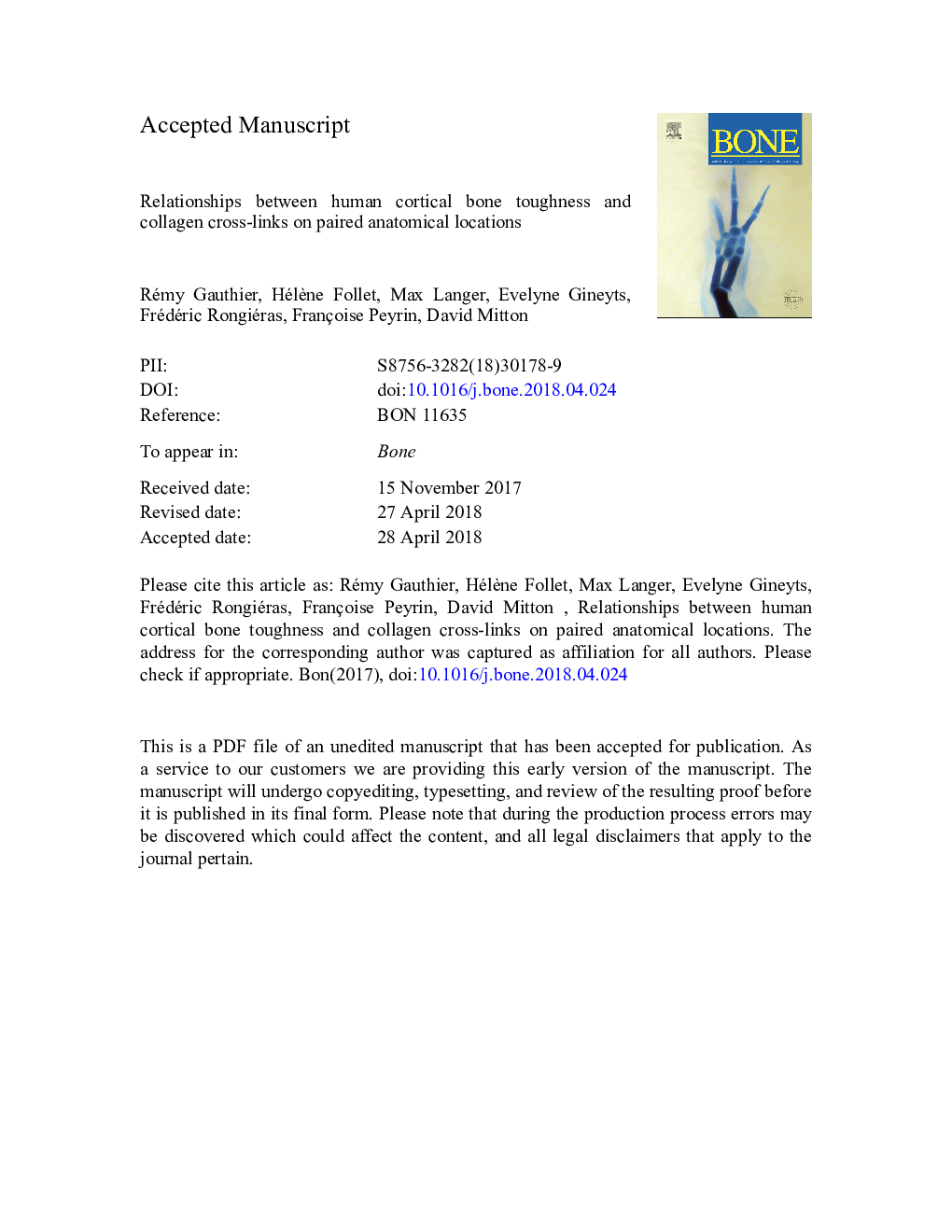| Article ID | Journal | Published Year | Pages | File Type |
|---|---|---|---|---|
| 8624890 | Bone | 2018 | 25 Pages |
Abstract
Human cortical bone fracture processes depend on the internal porosity network down to the lacunar length scale. Recent results show that at the collagen scale, the maturation of collagen cross-links may have a negative influence on bone mechanical behavior. While the effect of pentosidine on human cortical bone toughness has been studied, the influence of mature and immature enzymatic cross-links has only been studied in relation to strength and work of fracture. Moreover, these relationships have not been studied on different paired anatomical locations. Thus, the aim of the current study was to assess the relationships between both enzymatic and non-enzymatic collagen cross-links and human cortical bone toughness, on four human paired anatomical locations. Single Edge Notched Bending toughness tests were performed for two loading conditions: a quasi-static standard condition, and a condition representative of a fall. These tests were done with 32 paired femoral diaphyses, femoral necks and radial diaphyses (18 women, age 81â¯Â±â¯12â¯y.o.; 14 men, age 79â¯Â±â¯8â¯y.o.). Collagen enzymatic and non-enzymatic crosslinks were measured on the same bones. Maturation of collagen was defined as the ratio between immature and mature cross-links (CX). The results show that there was a significant correlation between collagen cross-link maturation and bone toughness when gathering femoral and radial diaphyses, but not when considering each anatomical location individually. These results show that the influence of collagen enzymatic and non-enzymatic cross-links is minor when considering human cortical bone crack propagation mechanisms.
Related Topics
Life Sciences
Biochemistry, Genetics and Molecular Biology
Developmental Biology
Authors
Rémy Gauthier, Hélène Follet, Max Langer, Evelyne Gineyts, Frédéric Rongiéras, Françoise Peyrin, David Mitton,
